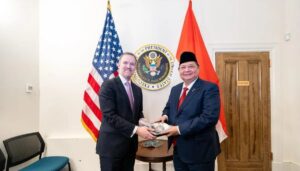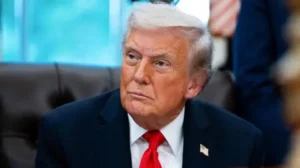Philippine Exports to U.S. Face Lower 19 Percent Tariff Under New Trade Deal; Zero Tariffs for U.S. Goods to Manila

Washington, The Gulf Observer: In a development hailed as a significant milestone in bilateral economic relations, Philippine exports to the United States will now be subject to a reduced 19 Percent tariff, down from the initially proposed 20%, following a high-level meeting between President Ferdinand R. Marcos Jr. and U.S. President Donald Trump at the White House.
Describing the encounter as a “beautiful visit,” President Trump confirmed the revised tariff policy and announced the removal of tariffs for American exports to the Philippines under a newly concluded U.S.-Philippines Trade Deal.
“It was a beautiful visit, and we concluded our Trade Deal, whereby The Philippines is going OPEN MARKET with the United States, and ZERO Tariffs. The Philippines will pay a 19% Tariff,” Trump posted on his Truth Social account early Wednesday (Manila time).
Trump also praised President Marcos, calling him a “very good and tough negotiator” for securing more favorable terms for his country.
A Key Trade Relationship
According to the Philippine Statistics Authority, the United States was the Philippines’ top export destination in May, accounting for USD 1.115 billion or 15.3% of total national exports. The reduced tariff rate is expected to benefit Philippine exporters across key sectors including electronics, apparel, and agricultural products.
The zero-tariff agreement for U.S. goods heading to the Philippines is seen as part of a broader push toward mutual market liberalization and stronger economic integration between the two allies.
Strengthening Bilateral Ties
President Marcos’ visit to Washington marks a historic first as he becomes the first Southeast Asian leader to meet with President Trump during his second term. The two leaders emphasized not only economic cooperation but also reaffirmed their long-standing strategic alliance.
Calling the United States the Philippines’ “strongest, closest, most reliable ally,” President Marcos underlined the importance of deepening bilateral ties, particularly amid regional and global uncertainties.
Expanding Military Cooperation
In addition to trade, both leaders signaled plans to expand military cooperation, reinforcing commitments under the Mutual Defense Treaty and the Enhanced Defense Cooperation Agreement (EDCA). This includes potential joint exercises, enhanced security coordination, and further U.S. military access to Philippine bases.
Strategic Implications
The updated trade arrangement and increased security collaboration reflect a tightening U.S.-Philippines alliance, positioning Manila as a key economic and strategic partner in the Indo-Pacific region. The deal is expected to have lasting economic and geopolitical implications, particularly amid ongoing shifts in regional trade dynamics.
While further details of the trade deal are yet to be released, economic analysts anticipate that Philippine exporters will gain a competitive edge in U.S. markets under the new 19% tariff structure, while American businesses stand to benefit from duty-free access to the Philippine consumer market.
The visit and its outcomes signal a new chapter in U.S.-Philippines relations, underpinned by shared interests in prosperity, peace, and mutual resilience.


